
PUPPER
A Smell Based Dog
Learning Tools Set
Position: New York
Duration: 2 weeks, Dec 2018
Role: Research, Interaction design, Engineering, Fabrication
Technic: Arduino, Wood working
/ Overview
Dogs have maintained close and great relations with people since ancient times due to our domestication. The training of dogs is often based on sound and vision. We use human language words and gestures as clues to teach dogs a variety of things. However, studies have shown that visual and auditory learning methods are not efficient for dogs. Using smell as a clue to mark different objects and events is more conducive to dog learning and memory.[1] According to a pet industry consumer report,[2] due to people's habits and industry development, residents in many Asian countries, especially China, train dogs at home. I developed a tool for owners to teach puppies and even communicate with them more intelligently at home.
/ Research
Unlike humans who are heavily dependent on their sense of sight, a dog's main perception is through its sense of smell. Dogs’ sense of smell is ome orders of magnitude more sensitive than humans because of they have hundreds of millions more olfactory cells lining the epithelium than human. Even their self-recognition is based on its sense of smell. A scent or odor may communicate a lot of information to a dog’s perspective such as the direction of the wind, the diet of the previous dog, and even the mood and health of the owner.
A research study has revealed that dogs are more efficient at odor-citation-assisted learning under fMRI detection. [1] When the tester uses a specially-shaped object, a specific odor, and a meaningless language to mark a learning content, odor was proven to be the best and most effective learning method that stimulates dog brain activity. There are very few tools for olfactory-guided dog learning in the market. Pupper aims to explore this particular learning method to improve learning efficiency of current dog training.
A research study has revealed that dogs are more efficient at odor-citation-assisted learning under fMRI detection. [1] When the tester uses a specially-shaped object, a specific odor, and a meaningless language to mark a learning content, odor was proven to be the best and most effective learning method that stimulates dog brain activity. There are very few tools for olfactory-guided dog learning in the market. Pupper aims to explore this particular learning method to improve learning efficiency of current dog training.
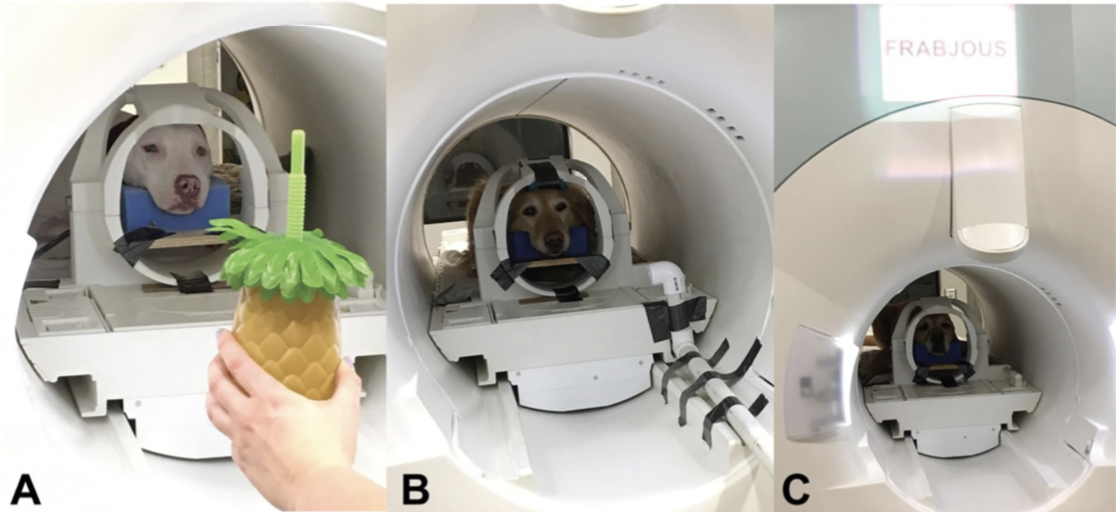
 Credit.
Fast neural learning in dogs: A multimodal sensory fMRI study
Credit.
Fast neural learning in dogs: A multimodal sensory fMRI study/ Ideation

Discrete Trials

Odor-Citation

Behavior Capture

positive reinforcement
/ Design & Implementation

shake hand module
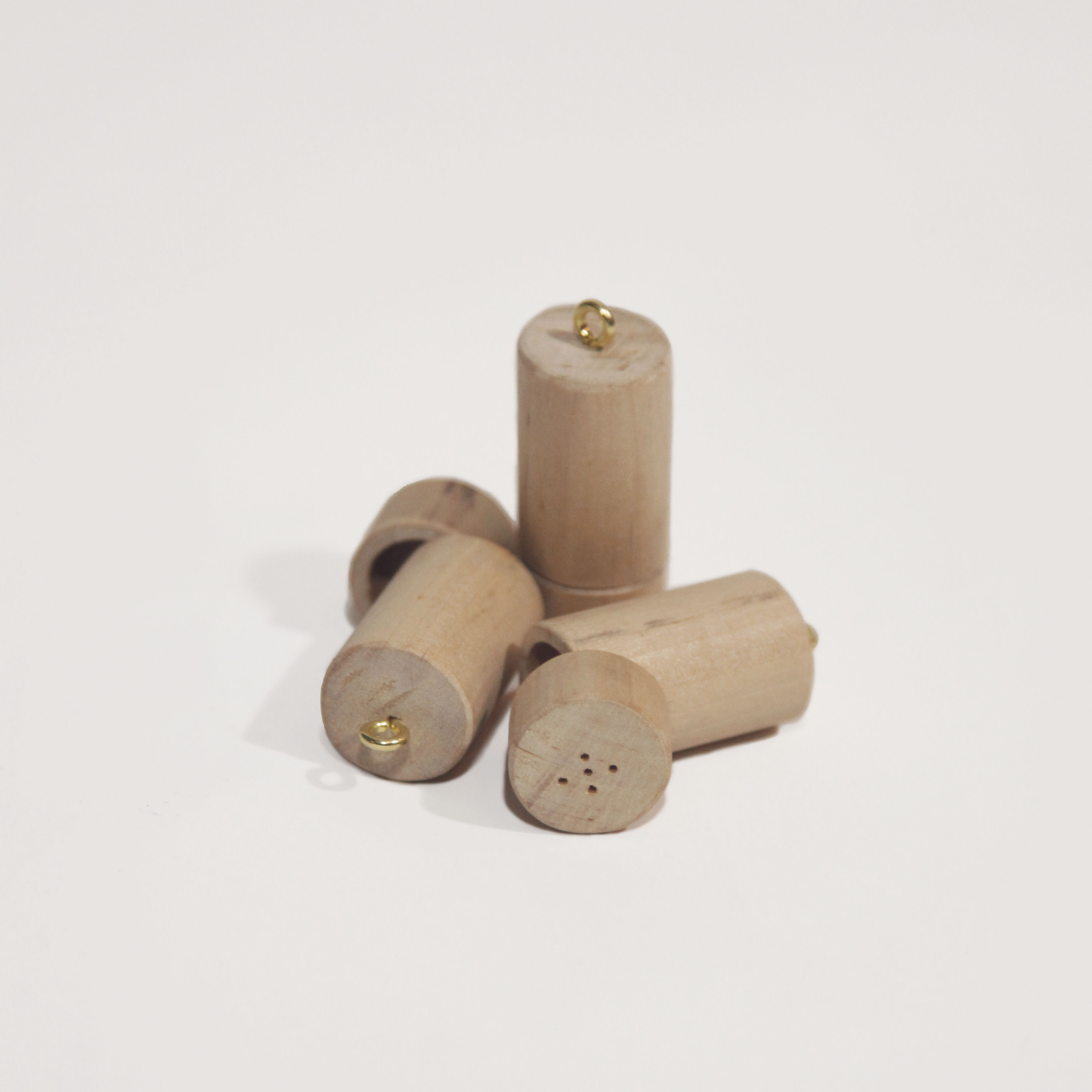
Smell containers
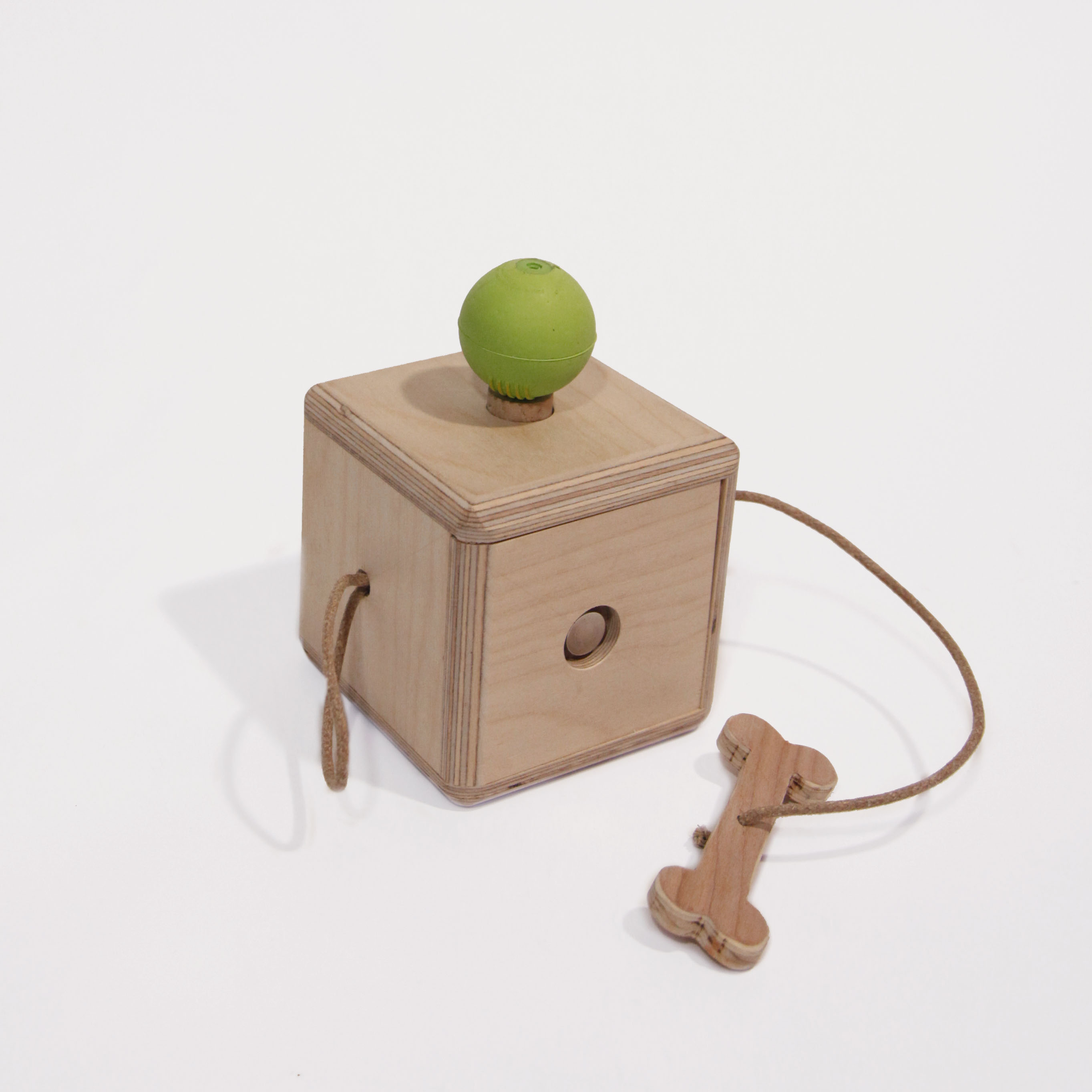
pull / bite module
Different behavior modules include specific odors that can be linked to a specific behavior the dog performed under the guidance of the tools. This permits a dog to complete the memory process more effectively. The owner prepares some small containers where these specific odors are contained. The scent containers are then used to recall the dog’s memory and command pets to perform certain behaviors in a different way. The reward module comprises of two parts: a first-level reward (food) and a second-level reward (vocal stimulation). When both modules are combined and connected, the reward module immediately rewards the pet even in the absence of the owner. Thus, these tools can consolidate the learning process of dogs. Special behaviors are learned in the dog’s previous training. These two modules will also maintain continuous participa- tion of both owner and pet to ensure a positive and interesting process that allows both parties to achieve optimal training outcomes.
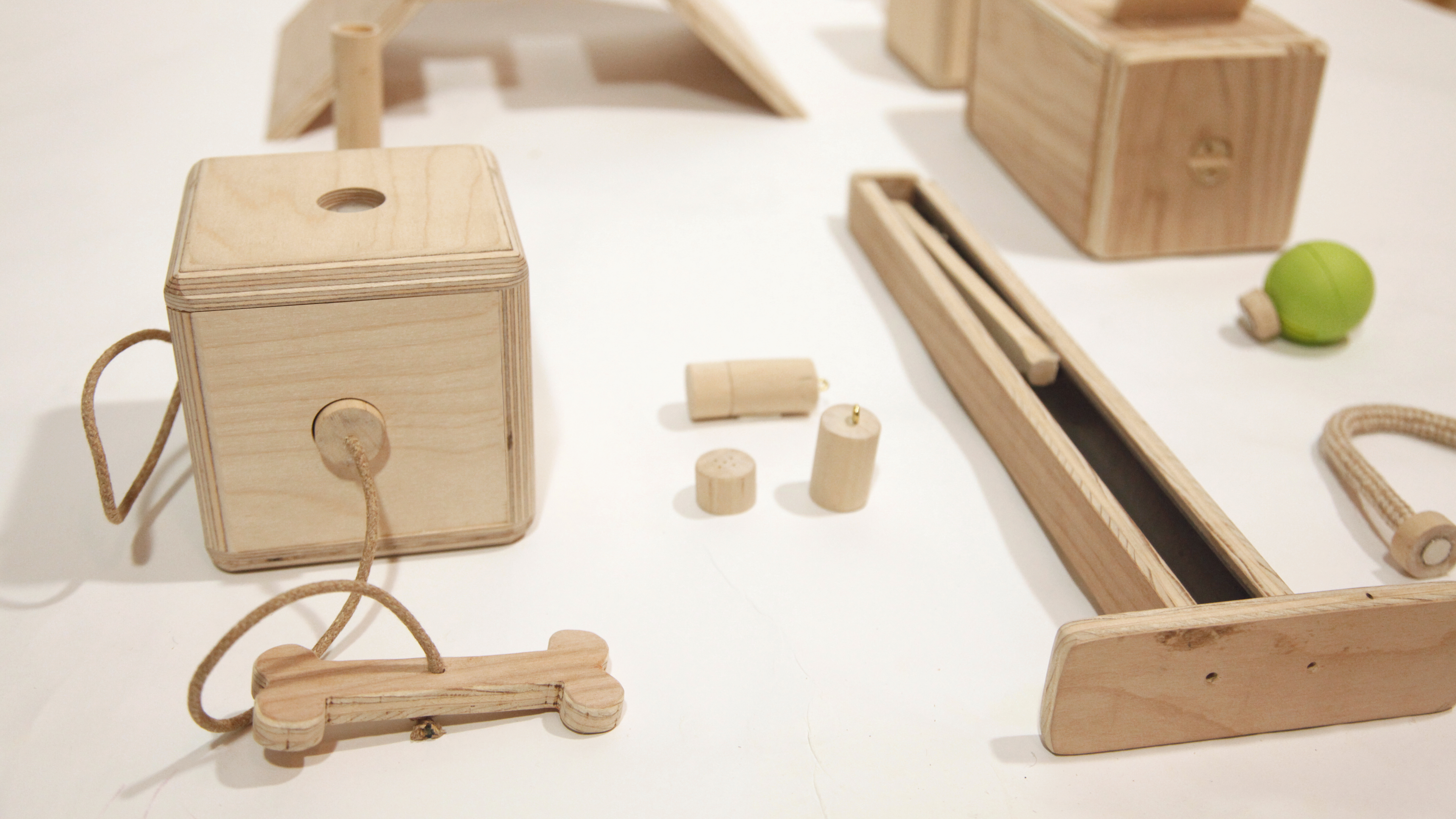
The behavior capture method is a common dog-training method. The method does not force the dog to perform certain actions. Rather, the behavior capture involves a more natural and gentle approach, including positive
feedback in the process. It is an effective way to encourage a dog to learn correct behavior by immediately notifying and rewarding the dog when a desired behavior is performed. Pupper mainly establishes a "capture system" by studying dog behavior, by calling out these specific dog behaviors through the tools included in the system, and by rewarding dogs for effective behavioral learning.
feedback in the process. It is an effective way to encourage a dog to learn correct behavior by immediately notifying and rewarding the dog when a desired behavior is performed. Pupper mainly establishes a "capture system" by studying dog behavior, by calling out these specific dog behaviors through the tools included in the system, and by rewarding dogs for effective behavioral learning.

The different training tools of pupper provide and present various scents. These scents are usually special such as anise extract, not so ubiquitous in daily life, and neutral to dogs (no harm or special attraction). Dogs are more likely to remember behaviors by linking behavior to particular scents as they interact naturally with the tool and are guided towards performing desired behaviors. Addition- ally, the small containers that contain the scents are convenient and handy for the owner to hold and carry in his hand at any time. The dog can be reminded and trained when necessary to achieve better training outcomes.
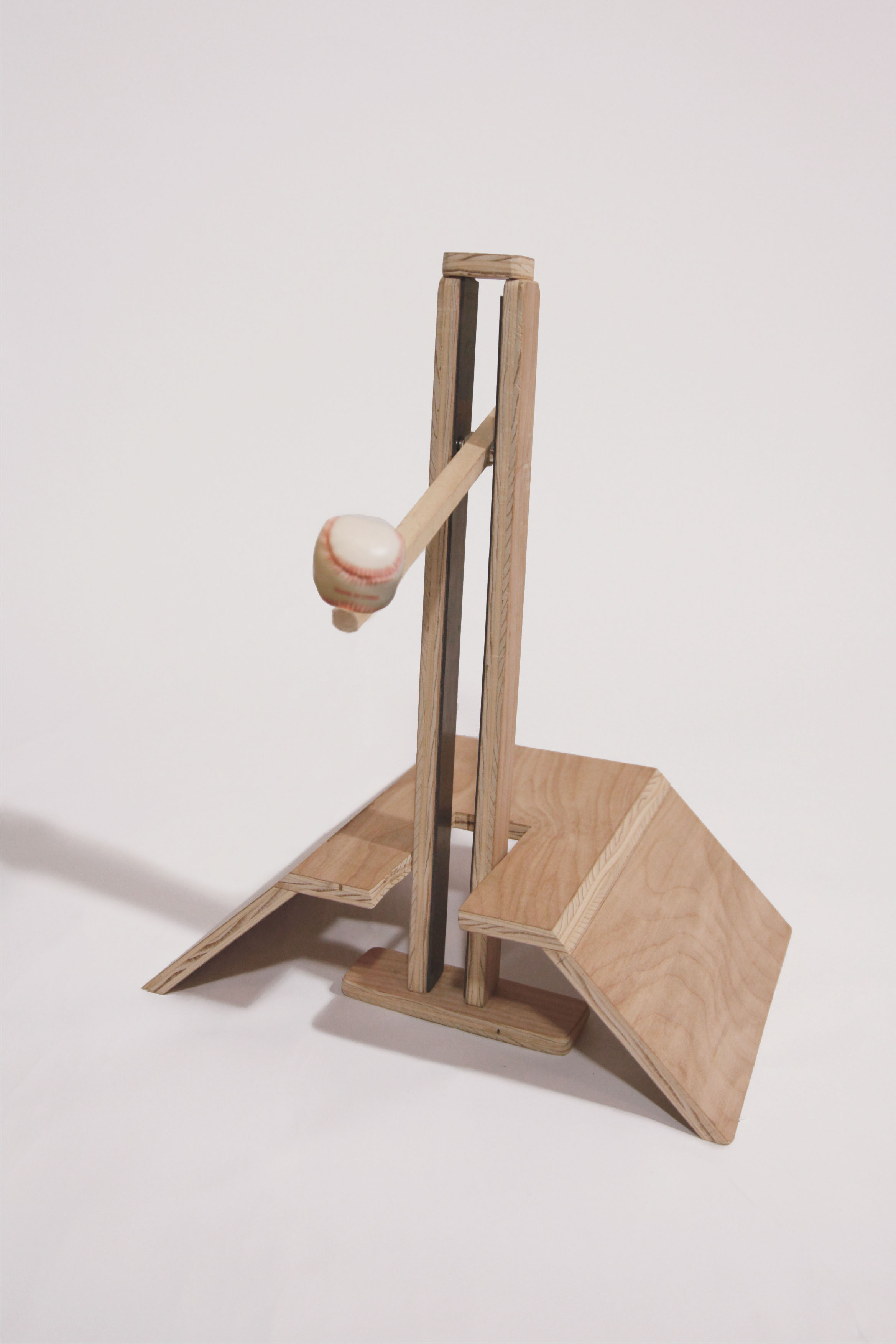
Pupper's behavior module includes basic behaviors existing in all training processes. There are already three tools that have been completed, namely: sitting/lying down tool, biting/pulling tool, and shaking hands tool. The design of the behavior module is based entirely on a dog’s behavioral characteristics.
The sit/lie module consists primarily of a vertical slide and a shorter shelter. A tennis-shaped toy attached to the slide on one end of the wooden pole is used to attract the attention of the dog. When the wood is gradually falling, the dog's body is also lowered until the specified behavior is performed.
The sit/lie module consists primarily of a vertical slide and a shorter shelter. A tennis-shaped toy attached to the slide on one end of the wooden pole is used to attract the attention of the dog. When the wood is gradually falling, the dog's body is also lowered until the specified behavior is performed.
The handshake module consists mainly of a box and a panel of deep boxes. The panel is at one end of the lever and can be easily pressed to achieve an approximate handshake.
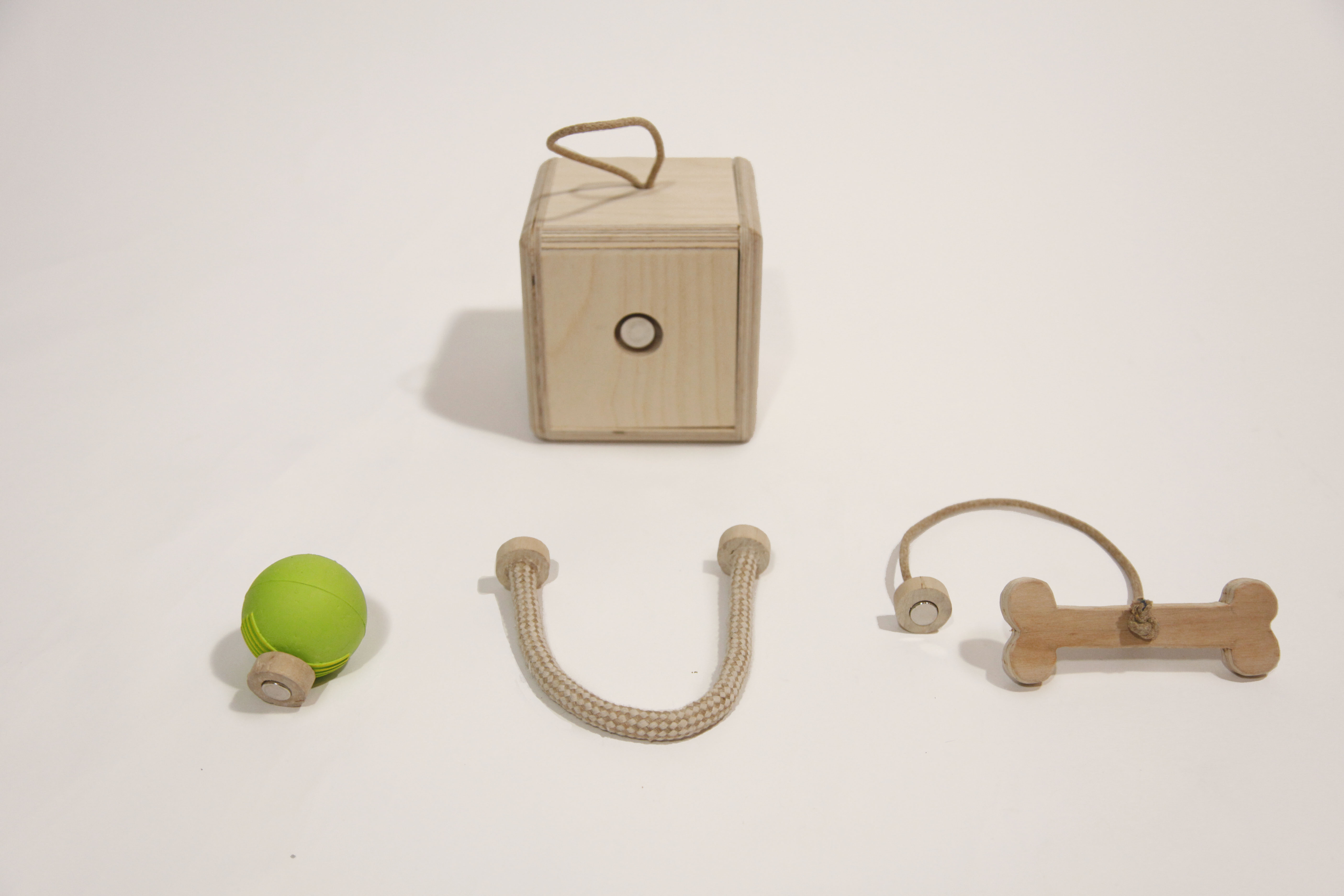
The bite/pull module is a box with a number of magnetic interfaces on each side. The knots, balls, bite toys, etc. are temporarily attached to the box through these interfaces, resulting in different ways of playing.

The reward module does not exist independently under normal circumstances and is required to be used in conjunction with the behavior module. Rewards must be awarded after capturing specific behaviors, especially when the owner is not present, to deepen the pet's memory of the desired behavior. I refer to some of the reward methods for dog training mentioned by Stanley Coren, and decided to introduce two reward modes: first-level reward (food) and second-level reward (language).
The groove of the communication circuit at the bottom of the reward module corresponds to the protrusion of the behavior module, and the circuit is connected when the two are combined. Thus, when the dog performs the desired behavior required by the behavior module, the trigger button will cause the reward module to release a reward. In the early stage of dog training, first-level rewards will be given more frequently to stimulate the dog's enthusiasm. In the middle and late stages of dog training, the voice is the main one. The dog adapts to the behavior even without the use of food rewards.
The groove of the communication circuit at the bottom of the reward module corresponds to the protrusion of the behavior module, and the circuit is connected when the two are combined. Thus, when the dog performs the desired behavior required by the behavior module, the trigger button will cause the reward module to release a reward. In the early stage of dog training, first-level rewards will be given more frequently to stimulate the dog's enthusiasm. In the middle and late stages of dog training, the voice is the main one. The dog adapts to the behavior even without the use of food rewards.
Reference
[1] Gregory S. Berns, Andrew M. Brooks and Mark Spivak. 2015. Fast neural learning in dogs: A multimodal sensory fMRI study. Behavioural Processes. 110 (2015) 37–46.
[2] 2017 Chinese pet industry white paper consumer report
[3] Alexandra Horowitz, Julie Hecht and Alexandra Dedrick. 2013. Smelling more or less: Investigating the olfactory experience of the domestic dog. Learning and Motivation. 44 (2013) 207–217.
[4] Alexandra Horowitz. 2017. Smelling themselves: Dogs investigate their own odours longer when modified in an “olfactory mirror” test. Behavioural Processes. 143 (2017) 17–24.
[5] Stanley Coren. How Dogs Think, Free Press, 2004
[6] Nathaniel J. Hall, David W. Smith and Clive D.L. Wynne. 2013. Training domestic dogs (Canis lupus faxsmiliaris) on a novel discrete trials odor-detection task. Learning and Motivation. 44 (2013) 218–228.
[7] Nicola Jane Rooney and Sarah Cowan. 2011. Training methods and owner–dog interactions: Links with dog behaviour and learning ability. Applied Animal Behaviour Science. 132 (2011) 169–177.
[8] Stanley Coren How Dogs Think, Free Press, 2004